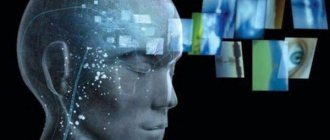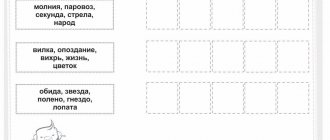Many people, back in school, dreamed of not spending hours memorizing poems, but memorizing them immediately after the first reading. In fact, people with such phenomenal memory exist, and it is called eidetic, photographic or visual. For those around them, they are real talents, they are admired, they want to be like them. But psychologists and especially psychotherapists do not all share such enthusiasm, because they consider this ability to be a serious deviation.
So what exactly is eidetic memory - a sign of genius that should be proud of, or a pathology that needs to be treated?
What it is
Eidetic memory is a type of memory that allows you to retain a visual image and then reproduce it in great detail. At the same time, other sensory modalities are also connected: visualization is followed by tactile, gustatory, auditory, olfactory and motor memories. Another feature is long-term storage and random recreation of all this at the right moments. Many years may pass after the event, but a person, if desired, is able to experience it just as vividly again and again.
Photographic memory is distinguished primarily by the detail of visual images. All people probably remember the shot from the film “Titanic”, where the main characters stand at the stern of the ship, arms spread wide. But few people will immediately answer whether Rose was wearing jewelry at that moment, how much and what kind exactly, what kind of pattern was on her scarf, whether her hair was braided in her hair and many other little things. An eidetic person, even if he watched the film many years ago, can easily tell about them. He will also add about what color the sky was and what chains the young people held on to so as not to fall.
Visual eidetism can be innate (explicit), and then the person possessing it becomes a real phenomenon for everyone around him. It can also be developed throughout life and achieve considerable results. Perhaps not as impressive as those of natural geniuses, but sufficient to successfully memorize large amounts of visual information.
Origin of the word. The term “eidetic” comes from the ancient Greek word “εἶδος,” which translates as “image, appearance.” This reflects its basic essence - the ability to remember and reproduce visual objects.
Test for eidetic or photographic memory
At the end of the article, we invite you to take a short test. Do you want to know if you have a good photographic memory? Time 30 seconds and look closely at the following image:
Now, having closed the drawing (be honest with yourself), answer the following questions:
- How many wheels are shown in the picture?
- What color is the tractor trailer?
- How many people are shown in the picture?
- How many crop planting lines are there in the figure?
- How many animals are shown in the picture?
Check your answers. Did you guess everything correctly?
Translation by Alexandra Dyuzheva
This post is also available in: Spanish French German
Main characteristics
Visualization + sensory
Reproduction of visual images first of all, all others are secondary and only follow visualization. The eidetic initially remembers the picture: a sandy beach, a blue ocean, a sun lounger, vacationers, palm trees. When he introduces her after a while, he will be able to tell what he was holding in his hands at that moment (touch), how bitter the cocktail was (taste), what his companion said (hearing), what perfume she was wearing at that moment (smell) and even how hot the sun was (“body memory”).
Detailing
The smallest depiction of images: details that no one pays attention to are remembered. For example, how many buttons were on the jacket or how many lines were on the page. First of all, these nuances concern the visual image. It’s not for nothing that eidetic memory is also called photographic. It’s as if a person takes out a snapshot of an event in his head and describes it.
Involuntary retention
Initially, a person does not set himself the task of remembering something specific; all this is deposited in his consciousness on its own. However, this property is characteristic only of born eidetics. Those who develop their photographic memory, of course, do it purposefully.
Random Play
A person can remember the desired image at any time.
Large volumes
Naturally born eidetics, as a rule, simply have an endless storage of memory. That is why they surprise others by the fact that they can easily speak 20 different languages, accurately quote classics, and know all of Shakespeare by heart.
Brightness of images
Conventional memory is characterized by the gradual erasure of images. Years later, we vaguely imagine the faces of people we haven’t seen for too long, we forget their names, and we barely remember the circumstances of our acquaintance. Eidetics, having experienced something once, will never forget it. If at the age of 20 they were introduced to some mutual acquaintance with whom they never even crossed paths, at 50 they can easily tell what his name was, what he was wearing and what timbre of his voice he had.
Eidetics for children - exercises
You can work with a child using eidetic exercises from 3-4 years old
It is important that the child himself shows interest in the studies - then science will be useful. The most important condition is the child’s desire and his joyful mood during learning
Tasks with cards
Write your own fairy tale
Give the child 3 pictures and ask him to make up a fairy tale (story) so that the objects depicted are found in it. For older children, you can use 5-7 cards. You can complicate the task by saying that the fairy tale must be on a specific topic, for example, New Year, summer, adventures at sea, etc.
What disappeared
Place the cards on the table in front of your child and carefully look at the drawings with him. Then ask the baby to turn away, while you remove one card from the table and change the location of the others. When the child turns around, he has to find out which card disappeared.
Games to develop visual perception
Researchers
Look at an object with your child, for example a cup. But you need to look like researchers, that is, pronouncing as many external characteristics as possible: color, shape, material, design, inscriptions, damage, and so on.
Detective
Make a wish for some object that is in your and your baby’s field of vision. Let the child try to guess by asking leading questions. In order for your child to better understand the rules of the game, you can change roles with him: first, let him guess the object himself, and you ask questions.
Games for the development of auditory perception
What does it sound like?
Show your baby one by one objects and musical instruments that can make sounds and hide them in a box. Then make a sound with one of the objects and ask the baby to name which object sounds like that.
Sounds around us
Sit comfortably, close your eyes and listen to all the sounds around you for 10-15 minutes with your baby.
Who lives in the house
Take a box - it will be a house. Place cards with pictures of animals in it. Ask your child to say who lives in the house. At the same time, you need to make onomatopoeic animal sounds: meow, woof, mu-mu, and so on.
Games that develop the perception of smells
Guess the scent
Place fragrant spices, herbs, coffee, and foods into matchboxes. Ask your child to guess what is in the box by smell. You can diversify the task - make 2 boxes with the same contents and give the task to find boxes with the same content by smell, without opening them.
In addition, you can ask your child to describe the smell, or if the task turns out to be difficult, tell him yourself. For example, the smell of garlic is sharp and pungent, and the smell of lemon is fresh and invigorating.
Exercise on all types of perception
Place three cards with objects in front of the baby. Name them along with it and describe their characteristics in relation to all analyzers: visual (what it looks like), auditory (what sounds it makes), tactile (what it feels like), gustatory (what it tastes like), kinesthetic (how it moves).
Thus, the baby remembers the image of the object. Turn the cards over with the pictures facing down and ask your child to remember what is written where.
Memory exercises
Remember the words
Choose a series of words to memorize and ask your child to compose a story from them so that the words appear in the suggested order
The story may be illogical and fantastic: here it is important to give complete freedom to imagination
Remember the move
Children usually love to dance, so they will be happy to learn new movements and combinations with you. For better memorization, you can come up with associations for them or connect them with some stories.
Eidetics for children can be an excellent foundation and excellent preparation for school and adult life.
Degrees
There are 5 degrees of severity of eidetism:
- Requires pinning to play.
- Weak visual images.
- Visual images of medium clarity with the appearance of some particular details.
- Clear, complete images of complex objects interspersed with sensory modalities.
- Vivid, detailed eidetic imagery accompanied by clear sensory modalities.
By zero, this implies a short-term preservation of a vague afterimage without detail.
Obvious eidetics with 5 degrees of severity are divided into 2 more types:
- “T-type”: have persistent and overly vivid eidetic images, which can be intrusive and border on hallucinations. They are not always able to control them.
- “B-type”: they reproduce the desired image only when necessary.
It is believed that obvious eidetics can be easily identified in a crowd by certain facial expressions and movements.
How to develop
Those who do not have innate eidetic abilities should not be upset, because this type of memory can be developed. How quickly this can be done depends on individual characteristics and frequency of training.
Aivazovsky method
It is believed that the artist I.K. Aivazovsky had eidetic memory. He could mentally not only reproduce a picture of a seascape in motion, but also stop it at any moment. This is what allowed him to depict the storm, waves, splashes, colors of the sky and other details of seascape painting with such precision.
In psychology there is even a separate method for developing eidetic memory, which bears his name. It's quite simple to master:
- Choose one item.
- Watch him closely for 4-5 minutes.
- Close your eyes, mentally imagine it and describe it to the smallest detail (color, size, shape, details).
- Open your eyes, compare the real and the images reproduced in your thoughts, notice what was missed.
- Repeat the exercise from the very beginning.
- Do this until the images completely match.
Each time you need to choose more complex objects (you can start with a TV and end with a picture) and gradually reduce the observation time.
Exercises to develop photographic memory
Exercise 1. Unforced observation
While walking, count the number of houses on both sides of the street, the floors in them, shops, trees, cars parked in the parking lot and other little things that can be counted. Save your findings on the way back. At home, reproduce all the numbers you remember.
Exercise 2. Associations
When memorizing any information, present it in the form of pictures. Moreover, they must be built on incredible associations that cannot exist in life. Psychologists say that this is one of the most effective techniques to improve eidetic memory in a short time. Example. You need to buy milk, a loaf of bread and toilet paper at the store. We present the following phantasmagoria: a loaf of bread, dressed (wrapped) in toilet paper, drinks milk.
Exercise 3. Textual criticism
The goal is to develop photographic memory for texts.
Print out an A4 sheet with text you are unfamiliar with. Read it carefully and remember it as much as possible. Ask someone to add 2-3 new words to it and print it out again. The task is to find fresh inclusions as quickly as possible.
Exercise 4. Palindromes
Read all signs and names out loud backwards.
To develop eidetic memory, numerous board and online games “Find 10 differences/cat/words/objects”, “Paired pictures”, and any attentiveness tests are also suitable.
Neurobics
Helps train eidetic memory and neurobics - gymnastics for the brain. The most effective exercises:
- Constantly go to the same place (to work, to the store) using different routes and at the same time do the casual observation exercise (see above).
- Once a week, from morning to evening, do all the manipulations that you are used to performing with your right hand with your left (brush your teeth, hold a spoon, write).
- Once a day, read a highly intelligent text on a topic about which you understand nothing. Try to delve into every word and grasp the meaning.
- When answering someone's questions, watch the construction of your speech. Speak as if you were writing an essay. At the same time, everything said must be clearly reproduced in the head in the form of text.
- Mute the TV and try to understand what is being said on the screen. Then test yourself (recordings of the programs can be found on the Internet).
So you don't have to be born with the phenomenon of photographic memory. You can develop it yourself. Of course, it will not be as bright and voluminous as that of eidetics, but you can learn to quickly memorize and reproduce a sufficient amount of information.
Development of identity memory in everyday life
Like any other memory, identic memory likes to keep our brain calm. The absence of stress, depression and anxiety is an excellent guarantee for high-quality and effective training.
Training should be carried out on a regular basis
The BrainApps service can help with this, since in your personal account you track your training progress, and you can also get recommendations on what to pay attention to when improving your personality
Sports, balanced nutrition and moderate physical activity every day are the key to brain vigor and active functioning. Giving up bad habits also has a positive effect on the development of identity memory in an ordinary person.
The problem of eidetism
Since the Serbian scientist V. Urbancic first described this phenomenon in 1907, many researchers have remained interested in eidetic memory. It was even a separate object of study at the Marburg School of Psychology in Germany (headed by E. Jensch) in the middle of the 20th century. The works of L. S. Vygotsky, M. P. Kononova, A. R. Luria, S. L. Rubinstein and many other leading psychologists and psychotherapists are dedicated to her.
There is ongoing debate about eidetism in scientific circles. The fact is that in psychology it is simply a separate type of memory, like social, spatial, sensory. Yes, it is unusual, different from others, but nevertheless amenable to qualitative characterization and even developed using separate techniques. New eidotechniques are appearing that allow one to train this ability.
However, this phenomenon is treated quite differently in psychiatry. Let us immediately make a reservation that only innate, obvious eidetism is affected here, and not photographic memory, which was developed through special techniques. There are a number of scientists who consider this ability to be a serious organic pathology. What arguments do they use to prove their views?
Firstly, the amount of memory required to store images occupies certain brain structures, changing the biochemical and physiological properties of its cells. Neuroscientists from the University of California compared the eidetic to a computer with an additional hard drive installed. On the one hand, it increases productivity. On the other hand, it slows down other processes, and this can no longer be called the norm.
Secondly, M.P. Kononova, who studied children with congenital and acquired (developed to a certain level) eidetic memory, found that the former often suffered from hallucinations. This was subsequently proven by other scientists in adults. Jaensch at one time demanded that in the treatment of hallucinations, along with medical indicators, the patient’s eidetic abilities should also be taken into account.
Thirdly, a connection has been identified between epilepsy and eidetism. It turned out that almost always before, during and after an attack, epileptics reproduce vivid visual images from the past, accompanied by secondary sensory modalities. True, they almost always turn out somewhat deformed due to the underlying disease.
I. Schultz described cases of schizophrenia with subsequent suicidal attempts, which were dictated by attachment to a specific eidetic image.
Based on all this, many psychiatrists argue that innate eidetic memory is a pathology that requires constant monitoring by a specialist. Unfortunately, this confirms the fact that most famous people who have it simultaneously suffer from serious disabilities (most often mental): dementia, savantism, epilepsy, autism, schizophrenia, hallucinosis, and brain defects.
Advice. If you want to learn more about eidetic people, watch the movie “Rain Man,” in which the main character Raymond makes complex calculations in his head and can remember any combination of numbers. But at the same time he suffers from autism and dementia and spends most of his life in a psychiatric hospital.
This film image is “copied” from a real person - Kim Peak. This is an American who reproduced with amazing accuracy up to 98% of all the information he read. And subsequently he did not forget her. By the end of his life, he practically remembered 9,000 works by heart. He was born with a disproportionately huge head, as there was a cranial hernia the size of a baseball on the back of his head. His cerebellum was damaged and the corpus callosum, which connects the right and left hemispheres, was completely absent. Against the background of all these defects, brain neurons independently created new circuits that replaced the missing parts. The result is a multiple increase in memory capacity due to pathological interhemispheric commissures.
Methods
The main tools of eidetics are associations and acroverbal technique.
Working with associations
It is carried out in two directions: the chain method and the method of visual associations.
Chain method
The bottom line: you can connect even the most distant objects with each other using logical chains.
Exercise: 10-15 completely different words are selected (absolutely any: button, fast food, government, law, cactus, grandfather, finger, pleasure, literacy, tape). Assignment: compose them into a coherent story or just a logical chain. Sample text: The government has issued a law to get the maximum pleasure from fast food, for which they will issue certificates with cacti. Grandfather was so happy about this that he cut his finger and had to wrap it with tape.
According to eidetics, the more awkward the logical chain is, the brighter the eidetic images will be. It’s easy to forget the gray bunny and the yellow sun, because they are typical and everyday. But a letter with a cactus, a law on fast food, a grandfather with a finger wrapped in tape - this is fresh and unusual. The result is that all 10 words will remain in memory.
Visual associations
The essence: linking the information that needs to be remembered to a specific place, person, situation. A kind of “anchoring” from NLP.
Application in practice. For example, when explaining topics in the Russian language “Etymology” or “Similar words”. The teacher shows the class a spindle and a clock and asks them to find something in common between them. Naturally, these are two completely different subjects that are in no way related to each other. But it turns out that the spindle is spinning like the hands on a clock. Therefore, historically the words spindle, spin and time are closely related and have the same root. In the future, the student will only need to remember these two things in order to reproduce this information.
Acroverbal method
Memory training using eidetics is rarely possible without it, although it is actively used by mnemonics, neurobics, NLP and other areas.
The bottom line: to make it easier to memorize educational material, it is “encrypted” into poems, various abbreviations, codes, songs and even jokes. Firstly, it turns out clearly. Secondly, it is fascinating and educational. Thirdly, it is easy to remember. The student easily learns two lines of a funny rhyme, which at the right moment evokes the necessary images and associations in his subconscious. And instead of rhyming, he tells the rule in the Russian language.
Techniques used:
- rhyme (“something, either, that, something - don’t forget to put a hyphen”);
- phrases from the first letters of the material (the colors of the rainbow in the famous saying about the hunter with a pheasant);
- connective (when studying the Pythagorean theorem, imagine in all its colors how he ran around his triangle and made a discovery);
- hook (for example, replacing numbers with objects);
- Cicero's method.
Acrostic poem for memorizing the colors of the rainbow
Eidetics has in its arsenal many other techniques for developing ideal visual memory, figurative-associative thinking and increasing concentration:
- casual observation;
- textual criticism;
- palindromes;
- gymnastics for the brain (neurobics).
By regularly practicing eidetics, you can well develop the ability to quickly and without coercion remember the maximum amount of a wide variety of information.











